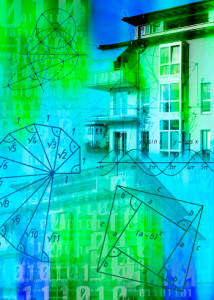 Becoming a landlord is an investment in time and energy. You’re loaning a home – in exchange for money – to someone who is usually a total stranger. You’re trusting that person to care for your home as you would … and to pay rent on time so that you can make your mortgage and insurance payments. With all this also comes another responsibility – making safety a #1 priority at your rental property. Be sure to check all these areas before you consider leasing your property.
Becoming a landlord is an investment in time and energy. You’re loaning a home – in exchange for money – to someone who is usually a total stranger. You’re trusting that person to care for your home as you would … and to pay rent on time so that you can make your mortgage and insurance payments. With all this also comes another responsibility – making safety a #1 priority at your rental property. Be sure to check all these areas before you consider leasing your property.
Mold
Mold that produces mycotoxins is called “toxic mold.” Some of the symptoms of regular mold exposure include runny nose, eye irritation (itchy, watery eyes), respiratory problems including chest tightness, difficulty breathing and coughing, headaches, and rash-like skin irritations. Other complications include symptoms of asthma and systemic fungal infections. Toxic building syndrome is also linked to mold exposure. For more about identifying and removing mold, please visit the EPA.
Lead
Lead paint is a real concern. If your home was built before 1978, you should have it tested. Landlords are obligated to disclose the existence of lead-based paint. Also test the drinking water as interior or exterior pipes may be lead if you have non-plastic plumbing installed before 1986. The EPA can also help when it comes to identifying and removing lead.
Smoke Detectors
Smoke detectors are a MUST and are required by law in most states. State and local laws govern the number, location and placement of the alarms. Be sure to follow your local regulations.
CO Detectors
24 states now require carbon monoxide detectors. Carbon monoxide is colorless, odorless and tasteless. It is also deadly. Symptoms include headache, nausea, vomiting, dizziness, fatigue and general weakness. Even if your state doesn’t require a carbon monoxide detector, be sure your rental property has at least one. You want to do your best to make your tenant’s safety a priority.
Windows
Make sure the windows function properly. Perhaps you’ve just painted or re-caulked all the windows. Regardless of the circumstances, you need to check each window to make sure it opens and closes properly. This isn’t just for convenience, it’s for safety. Windows are a possible area for escape in case of a fire or other emergency.
Electrical Wiring
Unless your electrical wiring is brand new, have an electrician come and inspect your home. There may be concerns you wouldn’t notice or even know about, but a professional will. As with everything else on this list, it’s better to be safe than sorry.
This is by no means an inclusive list, just a reminder of commonly-forgotten items to check in terms of landlord/tenant safety. To ensure there are no worries over premises liability, negligence or someone getting hurt, make safety your #1 priority, and instill that same belief in your tenants. Make sure your tenants know that you want the home to be safe, both for them and for visitors, and to bring any concerns to your attention immediately.
Andrew Miller
Latest posts by Andrew Miller (see all)
- Make Room for Motorcycles - December 20, 2013
- Making Safety a #1 Priority at Your Rental Property - December 17, 2013
- 3 Fun Team-building Activities Outside of Work - November 18, 2013
